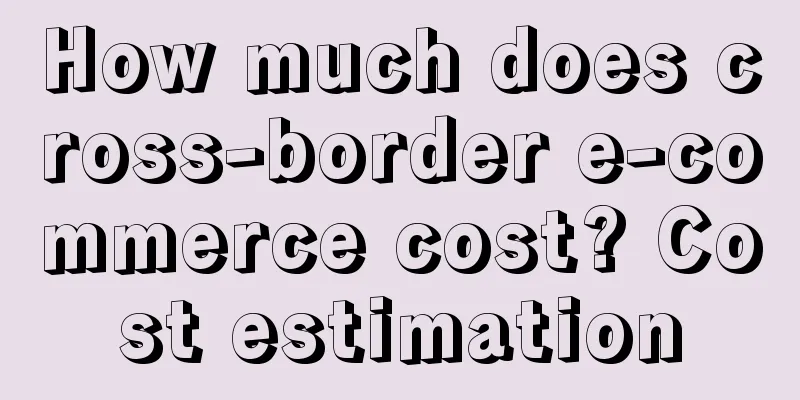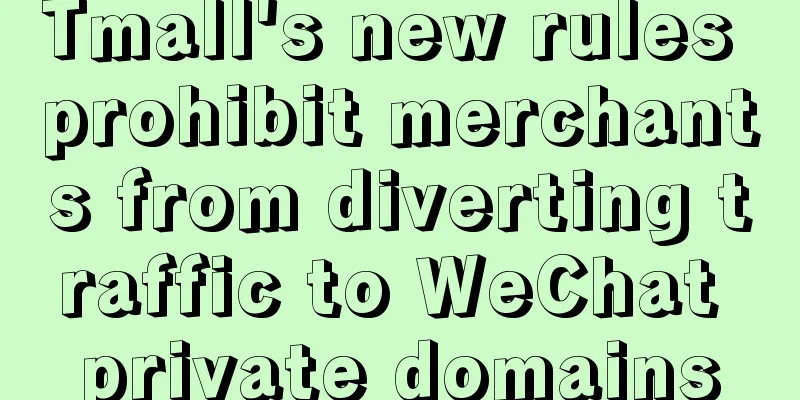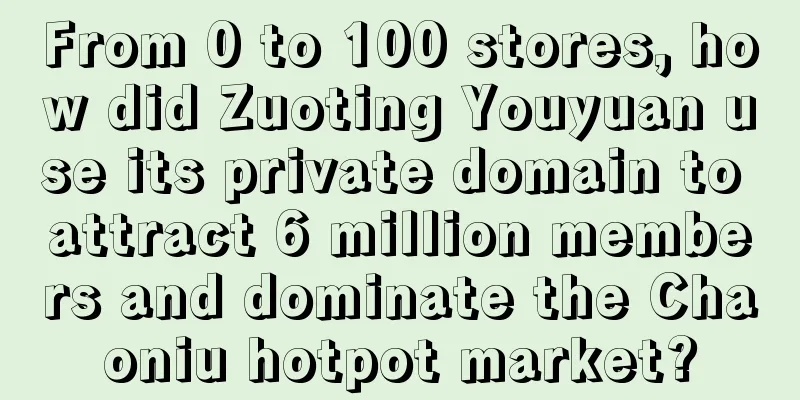Written before 618: How will consumer goods break through in 2024?

When talking with consumer product brands this year, the word I heard most often was "decline": the peak sales volume was not as high as last year, and regular sales continued to be sluggish. Especially this time, the cancellation of pre-sales by domestic mainstream e-commerce platforms before 618 means that the entire market has reached a consensus: "Buyers prioritize sellers." Originally, the pre-sale method can greatly alleviate the inventory pressure of merchants (especially merchants of large items), and the deposit can lock in most purchases, making the return rate stable (the return rate of most products is not high, about 20-30%); while canceling pre-sales means giving the initiative to consumers, making it more convenient and simple for buyers. Teacher Yan mentioned that the cancellation of pre-sales will have a greater impact on products with low average order value: because during the pre-sale period, consumers have a relatively long time to make careful calculations in order to meet the minimum order size and discount requirements, and in order to meet the minimum order size, they will increase the probability of purchasing products with low average order value. In other words, under the test of product involution, expensive traffic, and insufficient demand, brands have to face further pressure from platforms. Whether it is a new brand gaining a foothold from 0 to 1, or a brand eager to break through from 10 to 100, or a mature brand wanting to stabilize the situation and gain growth, it is extremely difficult. So, what other solutions are there at the moment? Combining the content of a top public relations operator and our own current practice, we propose four ideas for your reference: 1. Restructuring 4P 2. Take advantage of human nature and information gap to attack the incremental market (mass market) 3. Create a scene brand 4. Master the strategy of using small amounts to achieve big gains 1. Restructuring 4PsWiden the price range to pull out stratified groups of people, and make refined combinations corresponding to different channel goals. All marketing strategies are inseparable from the 4P framework. When a big single product is conquering the world, it is usually just one product with at most multiple specifications, and then multiple channels are set up, using one set of promotions to conquer the world. However, with the market's internal circulation and homogenization, the life cycle of a large single product has been significantly shortened, and the corresponding traffic cost has increased. Even the market leader is prone to falling into the quagmire of vicious competition. Therefore, brands should plan to build a product matrix in advance, actively attack different population markets, and reorganize the model from supply chain to products, channels and promotions. The necessary weapon is to widen the price range through price drive. How high will the price go? To quote Wei Zhe, "If you want to promote high-end products, multiply the price by 2; if you are currently selling mid-to-high-end products and want to expand into the low-end market, divide the price by 2. A price difference of 20% or 30% is meaningless: 1. A brand can hold some promotions and the prices will be consistent; Second, you need to build a business model and a financial model for each category. Only by multiplying the price by 2 can you change the original model. Because your original intention is to attract those customers that you couldn’t reach before through a new price range. By multiplying it by 2, you can reach the middle and high-end customers that you couldn’t reach before. By dividing it by 2, you can reach the middle and low-end customers that you couldn’t reach before. " Why do this? In addition to the increasingly fierce competition for traffic, it is also related to the differentiated attributes of different traffic platforms:
If you rely on a single product to conquer the world, you will not be able to truly take advantage of the different characteristics and population attributes of each platform. Only by combining significantly different prices and products can you gain promotional advantages on different platforms. To put it more bluntly, even if you are willing to defend, it is difficult to defend. It is better to make offense the best defense. To design products of different prices, we can achieve it through category innovation. For example, the price of Xiaodu has almost increased tenfold from a smart screen to a learning machine. We can also develop new brands. The automobile market has been particularly lively recently. NIO launched Ledao and entered the 200,000+ market. Xpeng Motors also launched its new brand MONA, priced at 100,000-150,000 yuan. 2. Take advantage of the underlying human nature and information gap to attack the incremental (mass market)Nowadays, many consumer products are breaking through their circles, gaining new volume and new groups, and moving towards the mass market. In addition to price, there are two other key tools: human nature and information asymmetry. Let me give you a few examples. The yogurt launched by blueglass recently is very interesting. Unlike other brands that make joint IPs, its best-selling products are either focused on "laxatives": if you want to lose weight, the easiest and simplest way is to drink a cup of the "Chang" series; or they are focused on "beauty": they are more stacked than Ideal Auto, with bird's nest, peach gum, hyaluronic acid, probiotics, anthocyanins, and immortal berries. They don't miss out on anything that can be linked to beauty. Recently, they also launched a so-called "boyfriend yogurt" with oysters, deer penis, etc. Everyone knows. Women are afraid of being ugly, men are afraid of being incompetent...this is the most basic human nature. As for why it wants to enter the market of middle-aged men, IC Labs put it bluntly: "There are many kinds of sports, why are fishing and throwing eggs the top ones? Because they make middle-aged men crazy. Why do all brands change color when talking about Huawei? Because Huawei has a monopoly on the user pool of middle-aged men. The end of mass marketization is the picky and scarce brand recognition of middle-aged men. Middle-aged men are the end of the universe of the consumer goods market." If the two basic needs of human nature are combined, there will undoubtedly be a greater driving force. For example, IKEA also hopes to attract more traffic to its stores. Previously, it did so through interesting posters and copywriting. Recently, its actions have been more simple and crude: restaurants offer half-price discounts on Fridays, which is to combine the two basic needs of human nature, "food craving" and "love of bargains", to form a powerful "sugar-coated bullet" to attract traffic. Regarding information gap, let’s look at the example of Starbucks. Compared with Luckin Coffee's brutal discounts, Starbucks, while claiming that it will not cut prices, secretly offers discount coupons on short videos, food delivery platforms, and bank points redemption. The essence of the game is still the routine of price discrimination, which is no different from the strategy of KFC and McDonald's more than a decade ago: through information asymmetry, the crowd is divided into business people (price insensitive) and price sensitive people, and discriminatory pricing is used to maximize profits. Another information gap it uses is to take advantage of the gap in brand awareness and consumer awareness in different cities to attack the sinking market, especially county towns. In the past 12 months, Starbucks has added 885 stores in the Chinese mainland market, and has entered 27 new cities, of which 74% are fifth-tier cities. In the sinking market, Starbucks' 90-day active scale growth is also setting a record high, and the sales growth rate is even twice that of high-tier cities. The logic behind this is that even though the new middle class and young people in big cities have become demystified by the brand and are faced with more differentiated boutique coffee choices, people in lower-tier cities still believe that Starbucks represents high-end, trendy and fashionable. Whether it is getting a good location in a shopping mall or attracting consumption from young people in small towns, the brand premium can be brought into play. For consumer products, how to systematically and strategically utilize human nature and information gaps to gain incremental population. 3. Create a scene brand"There are two main decision-making patterns for consumers, one is called "category thinking, brand expression", and the other is called "scenario thinking, label recognition, brand expression." Occupying a category can only bring stock growth and divide the existing market pie; creating a scenario can bring incremental growth and expand the market pie." - Excerpted from Mr. Kongshou's sharing in the Cat Living Room. For example, olive oil, which has been advertised crazily at airports recently, mainly conveys the message "choose ** brand for olive oil", but the question that remains unanswered is: why do we need olive oil? Suntory, which also advertises at airports, stimulates demand by creating scenarios. Its slogan is "One bite to get rid of the greasiness, let's go" - it focuses on the need to get rid of the greasiness caused by greasy food and alleviates the discomfort caused by the greasiness. From our own practice, there are two ways to practice scene branding: 1. Build real scenarios, promote conversion through direct experience, and use opinion leaders and KOL experiences to vividly interpret and deliver the experience online. The most direct example is Atour. There is an interesting saying, "Atour is not a hotel, but an IKEA model room." In the briefing released last year, the best-selling Planet Deep Sleep Pillow sold more than 1.2 million units. Last year, on Double Eleven, the sales volume of pillows on Tmall, Douyin, and JD.com was No. 1. You know, the gross profit margin of a chain hotel is only about 20%, but that of bedding can be 40% or even higher. They have put a lot of effort into scene marketing: including a 30-day trial sleep service when purchasing a pillow; in hotels, they also support customized deep sleep experience through the Atour Tips, and enjoy the service of deep sleep pillows delivered to your door - it is conceivable that Atour's regular customers, after experiencing the pillows several times or even dozens of times, it is hard not to be tempted. FamilyMart selling clothes is also a good example. FamilyMart opened a new clothing brand in Japan, Convenience Wear. Three years after its launch, sales have increased by about 200% every year. The initial breakthrough point was to use the "convenience" scenario to focus on emergency needs, such as basic socks, underwear, and raincoats. Recently, we have found on Xiaohongshu that more and more brands do not let KOLs use their products directly, but instead invite them to participate in an offline experience first (such as participating in a yoga event organized by blueglass), and then naturally "become interested" in them. In subsequent content, videos or pictures of using the product (not in a reported way) are naturally revealed. In this way, not only is it more interesting to watch, but the KOL himself will also have a stronger feeling for the brand and products, and it will be easier for him to convey positive emotions to users. 2. Create content related to product usage experience scenarios to highlight the irreplaceable nature of the product in the category. Building product content around scenarios is the consensus among most products doing content marketing. They even pay special attention to combining popular life trends with products. More importantly, in a certain scene, it is often the "category" rather than the "specific brand" that is suitable. In other words, any product of this category is suitable for a specific scene, such as a slightly tipsy scene, any low-alcohol wine is suitable. Therefore, it is necessary to strengthen the irreplaceability of one's own products in specific scenes, otherwise it is easy to make wedding clothes for others. For example, every job search software will promote its job search function in the scenario of "finding a job is not easy". When we are working on this part, we will specifically emphasize that "Maimai requires real-name registration by users, and many employees of certified companies post job postings or help with internal referrals. Compared with HR recruiting, this type of recruitment needs are more urgent, the feedback is faster, and they can communicate directly with the business department. They value ability and experience more and are not easily blocked by many rigid terms." Here, you may have a question: What if the product has no outstanding differences? Of course there is a solution. The expensive way is to use overwhelming advertising to occupy the mind of the scene, such as 999 cold medicine filling the rainy and cold scenes in various TV dramas, constantly reminding the audience to "drink 999 to prevent colds"; the cheap way is to name the product according to the specific scene, and strengthen the "exclusive sense" of the scene, such as "children's nap pillow". You can pay attention to a brand called "Xunpu", which mainly makes clothing care products. Almost every product is named after a specific scene. 4. Master the strategy of using small to win bigNow everyone is talking about founder IP, which is essentially the hope of gaining high attention and huge traffic with low cost. However, IP itself is not easy. It seems to cost less than investment, but it requires huge emotional investment from the founders themselves (and they are the group with the most emotional overdraft). Except for a few people, it is difficult for most company founders to continuously invest in outputting emotional value. Therefore, the following three approaches can be considered: 1. Use small materials to stimulate public opinionIn Teacher Yan's sharing, when it comes to the changes in public opinion, in the past, it might be a video or a piece of text that could stir up public opinion, but now it only takes a screenshot of a chat conversation or a circle of friends with a comment. These materials are not only more real, but can also carry and convey subtle emotions. When we design communication, we can create similar "small materials" to carry out public and private domain communication. 2. Use small concepts to influence the mediaAs traffic becomes more and more expensive, when promoting, we often need to rely on the power of media and public opinion. In addition to new facts (especially negative ones), the new concepts that reflect social trends are the most likely to be actively spread by the media. For example, in March, Maimai launched the concept of "substitutes for big companies", which attracted a lot of media attention. It was considered to represent a new direction for job hunting and a change in people's work mentality. Our explanation of this concept was on the headlines of the public accounts of "Wandian" and "Yicai" (for free). 3. Conquer users with careJie Rou's fan-filling became a hot topic on the Internet. Recently, many brands are also using the care and love of individuals for individuals (very important, with a sense of reality and concrete substitution) to leverage communication. Recently, I have seen a very impressive article about Manner, a shop assistant who sent a resignation cardboard box with a handwritten blessing: 4. Use small deviations to encourage experimentationRecently, "durian-type" products have become the focus of discussion. The so-called "durian-type" refers to products that are polarized in popularity and thus receive discussion, word-of-mouth and traffic, that is, they have a bit of "unconventional" meaning, such as exotic flavors, strange elements, magical effects, unimaginable combinations, and "opposite" crossovers (such as keep and Ele.me forming a CP). But we should also pay attention to the scale of products or services. For example, Bawang Chaji's latest product "Wanli Mulan" has a high caffeine content. After drinking it, people feel that they can "travel thousands of miles without sleep" and can join the army in place of their fathers. Therefore, it has a high degree of discussion and topic. However, many people reported that they had palpitations and even went to the hospital for emergency treatment, which led to many "dissuading" and even caused doubts and disgust. To sum up, we have the following suggestions for breaking through the consumer product market, from strategy to tactics, from macro to micro: 1. Reorganize 4P: widen the price range, redefine products to expand the audience, and correspond to different channels and promotion models (different products have different profit margins) 2. Take advantage of the underlying human nature and information gap to attack the incremental market (mass market) 3. Create scene brands: Either leverage conversions or convey emotions through direct experience in real scenes; or create content in constructed scenes, paying attention to highlighting irreplaceability 4. Master the tactics of using small to achieve big results, including small materials, small concepts, small intentions and small deviations, to leverage dissemination at the lowest cost. All methods are inseparable from insights based on human nature and strategies based on traffic. |
<<: Are Hequ houses worthless? Hema has moved into Pinduoduo
>>: Who is having a “cyber blind date” in the Xiaohongshu live broadcast room?
Recommend
Why can Coca-Cola transcend cycles but Zhong Xue Gao can’t?
In today's digital wave and evolving consumer ...
How to register an Amazon regular account? What information is required?
Now everyone is familiar with Amazon. If you want ...
618, how are the new consumer brands doing?
At the beginning of 2023, all topics surrounding c...
In the era of consumption downgrade, why did Luckin Coffee lower its prices and Moutai raise its prices?
In the era of consumption downgrade, why do some c...
Which platform is better for cross-border independent stations? What platforms are there?
When it comes to cross-border e-commerce, I believ...
When is the peak order time for Amazon in the United States? Why is the order volume so low?
When you join a cross-border e-commerce platform, ...
What should Shopee local stores sell? How to operate?
For some friends, choosing to open a store on the ...
The county town has changed, and young people have changed their minds
Coffee shops, script-killing games... my hometown ...
Is the Amazon VC account operated by Amazon? Will the VC accounts be linked?
The full name of Amazon VC account is Vendor Centr...
Is there anyone placing an order on the Starday platform? How can I place an order as quickly as possible?
Cross-border e-commerce platforms are not just the...
Pinduoduo, the "uncut" live broadcast room
The development of live broadcasting rooms in 2022...
Where is the real-name authentication for Shopee sellers? How to do it?
If you want to open a store on Shopee, you must go...
Are eBay's logistics standards too harsh? What is eBay's current official logistics?
Some people think that eBay's logistics standa...
How long will e-commerce remain low-key as video accounts have been promoted to the center of attention?
E-commerce platform restarts? What are the advanta...
Light IP, a complete guide from development to operation (Part 2)
Do you know Fat Tiger? How did it become so succes...









